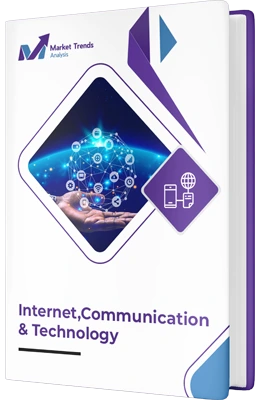
The 5G Core Market was valued at USD 8.5 billion in 2024 and is projected to reach USD 45.2 billion by 2033, exhibiting a compound annual growth rate (CAGR) of around 22.8% from 2025 to 2033. This robust growth trajectory underscores the accelerating adoption of 5G infrastructure across telecom operators, enterprise verticals, and government initiatives worldwide. The increasing deployment of network slicing, edge computing, and advanced security features are pivotal in driving market expansion. Strategic investments by leading telecom providers and regulatory policies favoring digital transformation further bolster this forecast. As 5G becomes integral to Industry 4.0, the market's expansion reflects its critical role in enabling next-generation connectivity solutions.
The 5G Core (5GC) is the foundational network architecture that enables the delivery of advanced 5G services, including ultra-reliable low latency communications (URLLC), massive machine-type communications (mMTC), and enhanced mobile broadband (eMBB). Unlike previous generations, the 5G Core is designed as a cloud-native, service-based architecture (SBA) that offers greater flexibility, scalability, and programmability. It facilitates dynamic network slicing, enabling operators to create customized virtual networks tailored to specific industry needs or consumer applications. The 5G Core integrates seamlessly with edge computing, AI-driven automation, and security protocols, positioning it as a pivotal enabler of digital transformation across diverse sectors.
The 5G Core market is witnessing transformative trends driven by technological innovation and evolving consumer demands. Industry-specific innovations such as network slicing and edge integration are enabling tailored solutions for verticals like healthcare, manufacturing, and automotive. The shift toward open, cloud-native architectures is fostering interoperability and rapid deployment, while increased emphasis on security and privacy is shaping regulatory compliance strategies. The proliferation of IoT devices and smart solutions is expanding network capacity and complexity, prompting investments in automation and AI-driven network management. Additionally, strategic alliances and partnerships are accelerating market penetration strategies, fostering a competitive landscape that emphasizes innovation and agility.
The rapid proliferation of 5G-enabled devices and the demand for high-speed, reliable connectivity are primary drivers fueling the 5G Core market. Telecom operators are investing heavily in network modernization to support emerging applications such as autonomous vehicles, smart cities, and industrial automation. The push for digital transformation across industries necessitates flexible, scalable, and secure network architectures, which the 5G Core provides. Regulatory frameworks encouraging spectrum allocation and innovation incentives further accelerate deployment. Consumer behavior trends favoring seamless, high-quality mobile experiences also propel the adoption of advanced core network solutions. Collectively, these factors create a fertile environment for sustained market growth.
Despite promising growth prospects, the 5G Core market faces several challenges that could impede its expansion. High capital expenditure and complex deployment processes require significant investments, which may deter smaller operators. The lack of standardized global protocols and interoperability issues can hinder seamless integration across networks. Security concerns related to data privacy and network vulnerabilities pose regulatory and operational risks. Additionally, slow regulatory approval processes and spectrum licensing delays can delay deployment timelines. Market fragmentation and the need for specialized expertise further complicate widespread adoption, necessitating strategic planning and robust risk management.
The evolving landscape of 5G Core presents numerous opportunities for market players to innovate and expand. The integration of AI and machine learning offers prospects for autonomous network management and predictive analytics. The burgeoning demand for private 5G networks in manufacturing, logistics, and healthcare opens avenues for tailored solutions. Edge computing and network slicing enable customized, industry-specific services, fostering new revenue streams. The push toward sustainability and energy-efficient networks aligns with global environmental goals, creating opportunities for green innovations. Strategic collaborations with technology providers and vertical industry leaders can accelerate deployment and market penetration, positioning companies as pioneers in next-generation connectivity.
Looking ahead, the 5G Core market is poised to evolve into a cornerstone of the digital economy, underpinning innovations such as autonomous vehicles, smart cities, and Industry 4.0. The proliferation of AI-driven network management will enable hyper-automation, reducing operational costs and enhancing service quality. Quantum computing integration may revolutionize security protocols, while the expansion of private 5G networks will empower enterprises with unprecedented control and customization. The convergence with emerging technologies like augmented reality (AR), virtual reality (VR), and holography will redefine consumer and industrial experiences. As regulatory frameworks mature and global interoperability improves, the 5G Core will facilitate seamless, secure, and intelligent connectivity at an unprecedented scale.
The 5G Core Market was valued at USD 8.5 billion in 2024 and is projected to reach USD 45.2 billion by 2033, exhibiting a compound annual (CAGR) of around 22.8% from 2025 to 2033.
Increasing demand for ultra-reliable, low latency communications (URLLC),Expansion of IoT and smart city initiatives, Strategic investments by telecom operators in 5G infrastructure, Regulatory support for spectrum allocation and digital policies, Growing enterprise adoption of private 5G networks, Advancements in cloud-native and open network architectures.
The Top players operating in the 5G Core Market are Ericsson, Nokia, Huawei Technologies, Cisco Systems, Samsung Electronics, ZTE Corporation, NEC Corporation, Juniper Networks, Intel Corporation, VMware, Red Hat (IBM), Mavenir Systems, Amdocs, Ericsson, HPE (Hewlett Packard Enterprise).
5G Core Market is segmented based on Deployment Type, End-User Vertical, Component And Geography
The sample report for the 5G Core Market can be obtained on demand from the website. Also, the 24*7 chat support & direct call services are provided to procure the sample report.